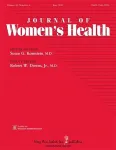(Press-News.org) Keep your checklists handy because the 62nd Supplement to the American Ornithological Society's Check-list of North American Birds, publishing today in Ornithology, includes numerous updates to the classification of the continent's bird species. A few highlights from this year's supplement, detailed below, include species splits for Mew Gull, Barred Owl, and Sedge Wren, among quite a few others; a transfer back to an old genus for Ruby-crowned Kinglet; and a revision of the linear sequence of passerine families. The Check-list, published since 1886, is updated annually by the AOS's North American Classification Committee (NACC), the official authority on the names and classification of the region's birds, and is consulted by birders and professional ornithologists alike.
The full Check-list supplement is available at: https://academic.oup.com/auk/advance-article/doi/10.1093/ornithology/ukab037/6309332.
Species Splits
Splitting of Barred Owl and Cinereous Owl (Proposal 2021-C-8)
Based primarily on differences in vocalizations, the Barred Owl (Strix varia) is being split into two species, the Barred Owl, which retains its English and scientific names for U.S. and Canadian populations, and the Cinereous Owl (Strix sartorii) for its counterpart in Mexico. "Vocalizations are particularly important for species recognition in owls," NACC chair Terry Chesser of the U.S. Geological Survey explains. The proposal to split Barred Owl into two species, submitted by Nathan Pieplow (University of Colorado Boulder) and Andrew Spencer (Cornell Laboratory of Ornithology), focused on key differences in both their rhythm and series songs, specifically in the series song, which they summarize as: "[sartorii's] syncopated beginning, its uniformity in pitch, and its lack of a drawn-out 'hoo-wah' note at the end. In the Barred Owl's series song, the highest and loudest notes are at the end, while in that of sartorii, the highest and loudest notes are in the middle."
Pieplow and colleagues were surprised and dismayed, when returning to many previously known locations to record vocalizations of Cinereous Owl, that there appears to have been a severe decline and reduction in range for this species. Moreover, while searching at sites in Oaxaca, Mexico, where this species had previously been found, they instead observed the Fulvous Owl (Strix fulvescens), a close relative more typically found farther south in Mexico and Central America, but which appears to have extended its range northward.
Splitting of Mew Gull into Common Gull and Short-billed Gull (Proposal 2021-A-3)
"If you're a coast-to-coast birder, you may be able to pick up a new species this winter," Chesser quips, describing the split of Mew Gull (Larus canus) into two species: Common Gull (Larus canus) and Short-billed Gull (Larus brachyrhynchus), the name used for this species as long ago as the first edition of the Check-list in 1886. The Common Gull breeds in Eurasia and is a casual visitor to the eastern U.S. and Canada, and occasionally ventures to Alaska, whereas the Short-billed Gull breeds in northwestern North America and winters south along the Pacific coast and also into the interior, primarily of the western U.S. This split is based mainly on differences in display vocalizations but also on genetic and other morphological differences outlined in a proposal by NACC member Pamela C. Rasmussen (Michigan State University). These species had been lumped based on what is now viewed as weak evidence from a paper published in 1919.
Splitting of Sedge Wren and Grass Wren (Proposal 2021-C-3)
Previous ideas about how Sedge Wren (Cistothorus platensis) should be divided turn out to be misguided, according to Chesser, who authored a proposal, based in part on a prior proposal to South American Classification Committee (SACC), to split this species. In the 1998 Check-list, Sedge Wren was considered a single species distributed from Canada to extreme southern South America, comprising three distinct groups: stellaris, whose range extended from Canada to Panama, and two other groups distributed in South America, platensis and polyglottus. However, the species split, which is based on vocalizations and genetics, does not occur where we might have expected it would, based on what we thought we knew about intraspecific variation in the species. Instead, it turns out that the populations breeding in Canada and the U.S. are distinct from all other populations, including those breeding in Mexico, Central America, and South America, and are being split from the rest. The new southern species, Grass Wren (Cistothorus platensis), will retain the scientific name due to reasons of priority, but the new northern species will keep the English name Sedge Wren (Cistothorus stellaris). The SACC had previously made this split after consideration of the separate proposal to that committee.
Transfers Between Genera
A New (Old) Genus for the Ruby-crowned Kinglet (Proposal 2021-A-9)
The Ruby-crowned Kinglet (Regulus calendula, now Corthylio calendula), a tiny olive-colored songbird with a bright red but hard-to-see crown in males, breeds in forests across the U.S. and Canada and winters as far south as Central America. It's one of six species in the family Regulidae, all currently placed in the same genus, Regulus. Two species are found in the New World, Golden-crowned Kinglet (Regulus satrapa) and Ruby-crowned Kinglet; and four species in the Old World, including the Firecrest (Regulus ignicapilla) and Goldcrest (Regulus regulus). In the 1931 AOU Check-list, the Ruby-crowned Kinglet had been transferred to its own genus, Corthylio, based on morphological differences from the other species, but as of the 1957 Check-list it was returned to Regulus, with Corthylio relegated to subgenus status, and it has been placed in Regulus ever since.
"It has long been known that the Ruby-crowned Kinglet is markedly divergent from the other regulids in plumage and other aspects of external anatomy, reflected by the fact that the genus Corthylio Cabanis, 1853, was erected for this species," authors Brandon Woo and Natalia C. García (Cornell University) and NACC member Pamela C. Rasmussen (Michigan State University) state in their proposal. Moreover, vocal and genetic data, including molecular studies dating from the early days of molecular systematics to the current genomics era, have consistently shown that the Ruby-crowned Kinglet is strikingly different from other species placed in Regulus.
"This is my favorite proposal of the year," Chesser notes, "and I think it will be interesting to birders for the same reasons. I hope this generates new appreciation for an unassuming little bird that is of great interest evolutionarily and really distinctive from other species in its family."
Linear Sequence Revision
Revision of Linear Sequence of Passerine Families (Proposal 2021-B-7)
A proposal by Chesser and NACC member Shawn Billerman based on new, concordant information from three recent genomic studies of passerines has led to a reshuffling and update to the linear sequence of passerine families to better reflect their phylogenetic relationships. "This is a big step forward that reflects a wealth of new information on evolutionary relationships among passerine families," Chesser explains. "This revision will create short-term disturbance, but we think this will be more than offset by the benefits of having a more scientifically accurate classification, which should be stable into the future, with occasional minor changes. The fact that several genomic studies produced virtually the same phylogeny was the key factor in convincing us that the time was right for this revision."
About the Journal
Ornithology (formerly, The Auk: Ornithological Advances) is a peer-reviewed, international journal of ornithology published by the American Ornithological Society. The journal's name changed to Ornithology in January of 2021. Ornithology commenced publication in 1884 and in 2009 was honored as one of the 100 most influential journals of biology and medicine over the past 100 years.
INFORMATION:
RICHLAND, Wash.--Researchers have increased the lifetime of a promising electric vehicle battery to a record level, an important step toward the goal of lighter, less expensive and long-lasting batteries for future electric vehicles. The work is reported June 28 in the journal Nature Energy.
Such batteries--the goal of research groups the world over--are seen as an important part of the solution to reduce the effects of climate change, and scientists are exploring a dizzying array of options.
One solution on the horizon is a lithium-metal battery for electric vehicles. These ...
(San Antonio, June 29, 2021) - UTSA criminology and criminal justice professors Michael R. Smith and Rob Tillyer working in collaboration with University of Cincinnati Professor Robin Engel examined racial and ethnic disparities in the use of force by the Fairfax County Police Department (FCPD). One of the nation's largest county police departments, the FCPD serves Fairfax County, Va., a major metropolitan county near Washington, D.C.
The team presented the results of its 18-month study today to the Public Safety Committee of the Fairfax County Board of Supervisors. ...
The historic 2020 hurricane season, with its record-breaking 30 tropical storms and hurricanes, left in its wake hundreds of deaths in the United States, tens of billions of dollars in damages, and one important question: Is this what the future will look like?
While most climate scientists agree that hurricane severity, at least in terms of rainfall, will likely increase as the planet warms, there remains uncertainty about the future frequency of hurricanes. Today's climate models offer a range of possible futures, some predicting an increase in North Atlantic hurricane frequency, others a decrease. These conflicting results beg the question: are these ...
HOUSTON - (June 29, 2021) - When you think about trade and market relationships, you might think about brokers yelling at each other on the floor of a stock exchange on Wall Street. But it seems one of the basic functions of a free market is quietly practiced by fungi.
New research from a Rice University economist suggests certain networks of fungi embrace an important economic theory as they engage in trading nutrients for carbon with their host plants. This finding could aid the understanding of carbon storage in soils, an important tool in mitigating climate change.
A research paper entitled "Walrasian equilibrium behavior in nature" is available online and will appear in an upcoming edition of Proceedings of the National Academy of Sciences. Ted Loch-Temzelides, ...
Among low-income, uninsured, or publicly insured women ages 25-64 years who were not up to date on cervical cancer screening, 72% perceived financial barriers to screening. The most commonly reported barriers were screening appointment costs (71%) and follow-up/future treatment costs (44%), according to a study published in the peer-reviewed Journal of Women’s Health. Click here to read the article now.
Screening is effective at reducing the incidence of and mortality associated with cervical cancer. However, disparities exist in cervical cancer incidence and mortality and in cervical cancer screening based ...
Langerhans cell histiocytosis (LCH) is a rare cancer involving dendritic cells, a type of white blood cell that usually helps defend against infections. The current standard of care for LCH, chemotherapy, cures fewer than half of patients.
"Our research team focuses on identifying the causes of LCH so that we can develop better therapies for patients," said Dr. Rikhia Chakraborty, assistant professor of pediatrics - hematology and oncology at Baylor College of Medicine.
Most cells in LCH lesions are not abnormal dendritic cells but other invading immune cells, such as T cells, that are recruited to sites of disease. The contribution of T cells and other immune cells to LCH disease is not known. Chakraborty and her team at the Texas Children's Cancer Center Histiocytosis Program characterized ...
Mate choice is important for females, who often invest much more energy in offspring than males. However, being too selective is a bad idea, as they might end up not mating at all. Biologists have wondered for a long time how females optimize their chances. Scientists at the University of Groningen have performed experiments with fruit flies that reveal the explanation: mating induces a behavioural change in female flies that makes them more choosy than when they are virgins. The results were published on 21 June in Nature Ecology and Evolution.
The fourteenth-century French philosopher Jean Buridan described a donkey who starved to death because he couldn't choose between two bales of hay. Evolutionary biologists have their own version of this decision-making ...
University of Colorado Boulder researchers have discovered that minuscule, self-propelled particles called "nanoswimmers" can escape from mazes as much as 20 times faster than other, passive particles, paving the way for their use in everything from industrial clean-ups to medication delivery.
The findings, published this week in the Proceedings of the National Academy of Sciences, describe how these tiny synthetic nanorobots are incredibly effective at escaping cavities within maze-like environments. These nanoswimmers could one day be used to remediate contaminated ...
Research from the McKelvey School of Engineering at Washington University in St. Louis has found a missing piece in the puzzle of optical quantum computing.
Jung-Tsung Shen, associate professor in the Preston M. Green Department of Electrical & Systems Engineering, has developed a deterministic, high-fidelity two-bit quantum logic gate that takes advantage of a new form of light. This new logic gate is orders of magnitude more efficient than the current technology.
"In the ideal case, the fidelity can be as high as 97%," Shen said.
His research was published in May 2021 in the journal Physical Review A.
The potential of quantum computers is bound to the unusual properties of superposition -- the ability of a quantum system to contain many distinct properties, or states, ...
Irvine, Calif., June 29, 2021 - Fireworks are synonymous in the United States with the celebration of Independence Day and other special events, but the colorful displays have caused a growing risk to public safety in recent years, according to a study by environmental health researchers at the University of California, Irvine.
Relying on real-time air quality measurements crowdsourced from a network of more than 750 automated sensors distributed throughout California, scientists from UCI's Program in Public Health found that short-term, extremely high-particulate-matter air pollution from the widespread ...




